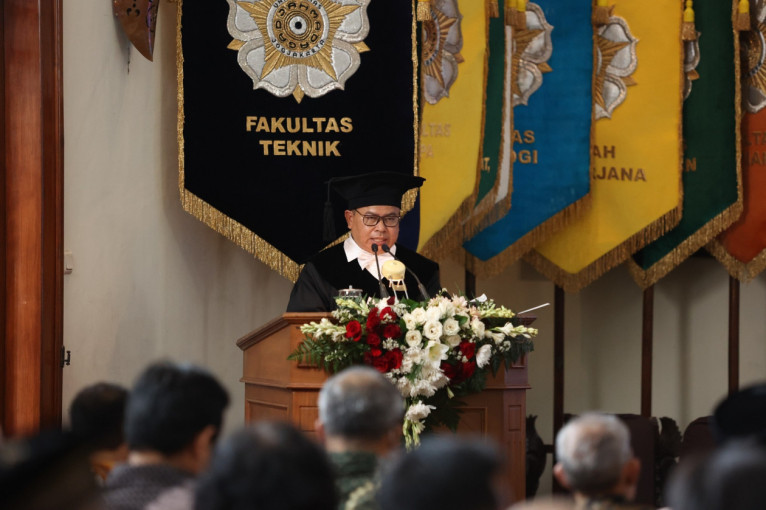
Dr. Kusmono has been officially appointed as a professor specializing in polymer-based composite material science at the Faculty of Engineering, Universitas Gadjah Mada (UGM).
During his inauguration at the UGM Senate Hall on Thursday (Mar. 7), he delivered an insightful speech titled “Pioneering Natural Fiber Composite Materials for Sustainable Industrial Applications.”
He emphasized the significant opportunities and challenges inherent in natural fiber composites within Indonesia. As a tropical nation, Indonesia boasts an abundance of natural fiber-producing plants.
“Indonesia, with its vast forests spanning the archipelago, has abundant natural resources. However, non-timber forest products have not yet garnered sufficient governmental attention,” he remarked.
Professor Kusmono highlighted the substantial economic and employment contributions of non-timber plants from which natural fibers can be derived. Historically, these fibers have found applications in textiles, paper production, and artistic and artisanal creations.
“Advancements in science and technology have opened up immense potential for natural fibers to substitute synthetic fibers in composite reinforcement materials. Given Indonesia’s rich natural fiber reserves, there is a tremendous opportunity to develop natural fiber composites as structural materials for industries such as automotive, aviation, maritime, and construction,” he explained.
However, natural fibers as composite reinforcements encounter several challenges that impede their widespread utilization. These include the variable availability and quality of fibers across regions and their heterogeneous nature that impacts mechanical properties.
Furthermore, compatibility issues arise between hydrophilic natural fibers and hydrophobic polymer matrices, leading to weak interfacial bonding. Natural fibers are also susceptible to moisture absorption and exhibit low dimensional stability.
Moreover, they are prone to degradation from environmental factors like weather changes, chemicals, fungi, and microorganisms. Their limited fire resistance and compatibility with low-temperature production processes (<200°C) also pose constraints. Most natural fiber composites presently employ synthetic polymer matrices, which are not environmentally friendly.
“Hence, a future challenge lies in developing biodegradable polymers as eco-friendly matrices for natural fiber composites,” he emphasized.
Professor Kusmono highlighted various evolving methods to tackle these challenges. Surface treatments like alkali, benzoyl peroxide, acetylation, and enzyme treatment, among others, enhance interfacial bonding.
Coupling agents such as silanes and maleic anhydride-containing compounds improve bonding between fibers and non-polar polymer matrices. Hybridization, combining natural fibers with synthetic or nanofibers, and incorporating additives like antioxidants and UV inhibitors are also crucial strategies.
“Hybridization can also be done by combining natural fibers with nanoparticles like nano-silica, nano-clay, and nanocellulose into the polymer matrix known as hybrid composites, which consist of two or more reinforcing materials within the matrix,” he elaborated.
The fifth method is developing biodegradable polymers from biomass. The development of polyester from biomass is an example of a biodegradable polymer that can be used as an environmentally friendly matrix for natural fiber composites.
“These biodegradable polymers can be produced by microorganisms that naturally consume certain monomers. Through these five methods, the challenges of natural fiber composites can be addressed, and natural fiber composites are expected to replace synthetic fiber composites for sustainable structural material applications,” he concluded.
Author: Agung Nugroho
Photographer: Donnie

